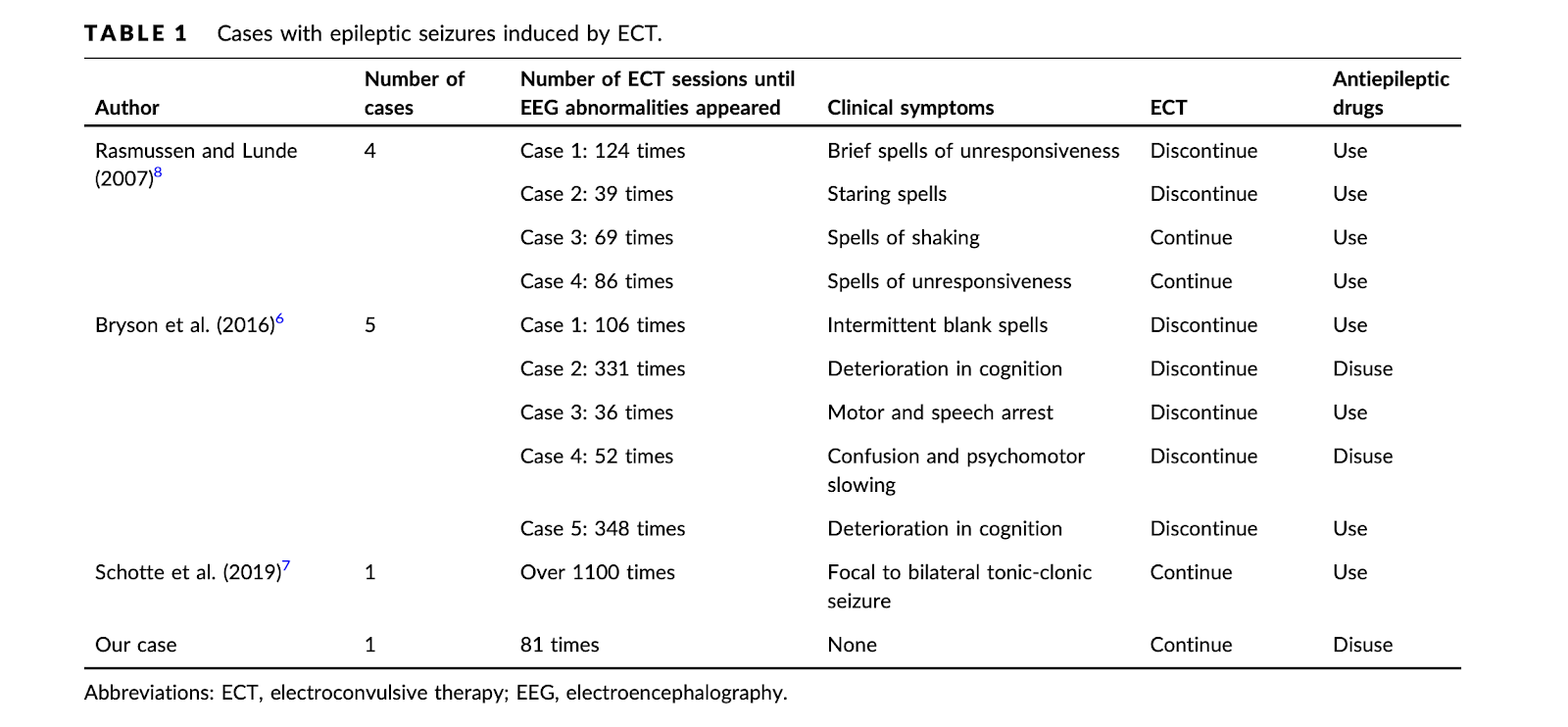EEG Spikes After Long-Term Maintenance ECT: Case Report from Japan
Out on PubMed, from clinicians in Japan, is this case report:
A case with temporal spikes on electroencephalography induced by over 80 sessions of electroconvulsive therapy.
PCN Rep. 2024 Jul 16;3(3):e227. doi: 10.1002/pcn5.227. eCollection 2024 Sep.PMID: 39015733
The abstract is copied below:
Background: Electroconvulsive therapy (ECT) is widely recognized as one of the most effective treatments for various psychiatric disorders and is generally considered safe. However, a few reports have mentioned that multiple ECT sessions could induce electroencephalography (EEG) abnormalities and epileptic seizures, a serious side effect of ECT. We experienced a case with EEG abnormalities after multiple ECT sessions and aimed to share our insights on conducting ECT safely.
Case presentation: We present the case of a 73-year-old female diagnosed with major depressive disorder. She underwent regular ECT sessions to alleviate her psychiatric symptoms. However, after more than 80 sessions, previously undetected EEG abnormalities were observed. Since the patient did not have clinical seizures, we were able to continue ECT at longer intervals without the use of antiepileptic drugs.
Conclusion: Our case suggests the importance of routine EEG testing in patients undergoing prolonged ECT. While careful monitoring is necessary, continuing ECT without antiepileptic medication in patients with EEG abnormalities could be permissible.
Keywords: ECT; electroconvulsive therapy; electroencephalography; epileptic seizures.
The report is here.
And from the text:
While this is an engaging case report, I do believe the authors may have overplayed their hand. Is the EEG spike clinically significant, and was it possibly caused by ECT? No way to know for sure, but I suspect it was an incidental finding of little clinical significance.
The discussion of whether ECT is anticonvulsant or promotes kindling is an interesting theoretical one. While it may do both, it seems that the anticonvulsant effect is orders of magnitude more common.
But kudos to these clinicians; the sharing of their experience is welcome.






Comments
Post a Comment